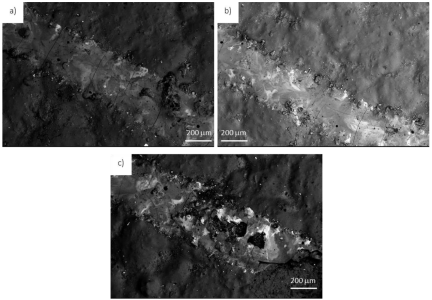Additive manufacturing of functionally graded ceramics with in-situ resources

In this activity, lunar regolith simulants were characterised based on their thermal behaviour, particle size distribution and composition, in order to inform the choice of consolidation method for functionally graded materials (FGMs) – powder characterisation results are provided in the 'conference paper' deliverable.
Firstly, an extensive literature review study (deliverable 'Literature Review') identified Digital Light Processing (DLP) and Spark Plasma Sintering (SPS) as promising consolidation techniques.
Initial experiments then focused on consolidating regolith alone using the selected processes, in order to find optimal processing parameters. DLP was utilised to print sieved regolith into the desired shape. SPS was then used as a post-process to achieve full sintering. Regolith samples were also consolidated with SPS alone, and the influence of sinter temperature, particle size and composition on sintering was investigated. Two metallic powders – Ti6Al4V and stainless steel 316L – were also sintered individually with SPS and the optimal processing parameters for each powder were found.
Finally, FGMs were consolidated with both Ti6Al4V and stainless steel, based on the optimal regolith and metal sintering parameters. XRD, SEM and optical microscopy were conducted on consolidated samples to characterise their morphology. Density and Vickers microhardness measurements were also taken.
